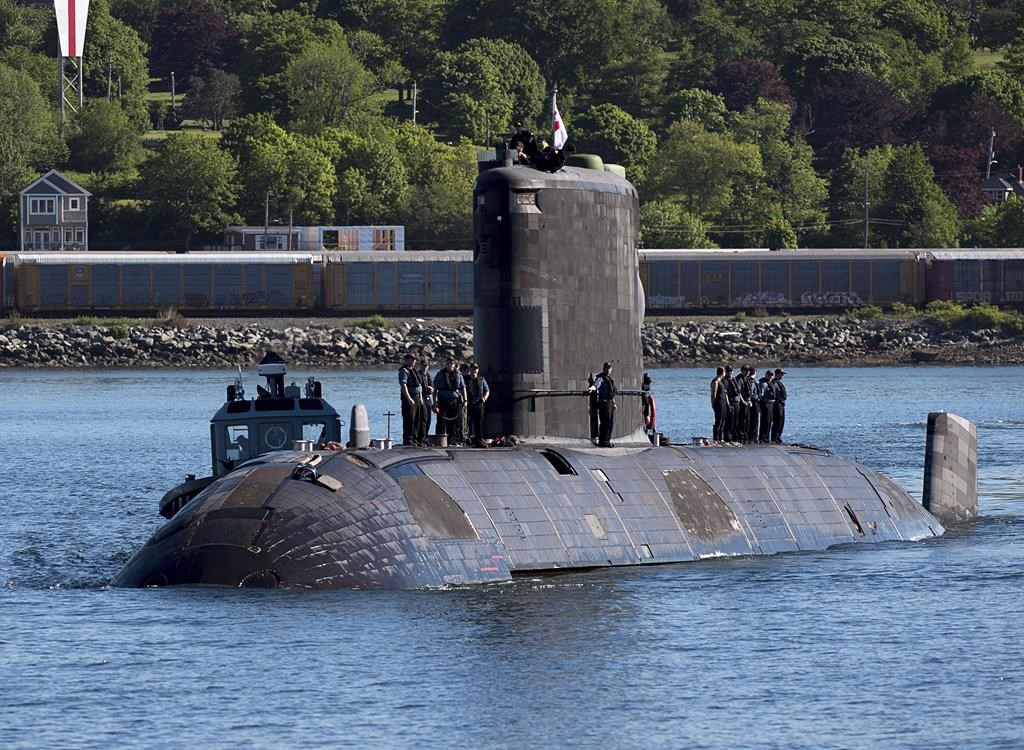I’ll say this for Canada’s military procurement system: it’s predictable. Predictably bad, yeah, but there’s something for consistency.

I’ve been writing about our bipartisan history of absolutely catastrophic military procurement for more than a decade. If anything, it’s actually gotten worse.
In fact, it was only about six weeks ago that I was writing here about the latest embarrassment in Canadian military procurement — our 10-year plan, which will probably end up running long, to procure 25,000 new 9 mm pistols to equip our military, replacing the Second World War-era pistols we currently use. Britain pulled off a similar procurement in two years. I don’t just mean generally similar, I mean eerily similar — the Canadian and British procurements are an accidental A-B test. I’m not sure which country is A or B, but I am sure which country was able to actually get new pistols to its armed forces. It wasn’t us, needless to say.
There was a bit of good news, of a sort, for the Canadian military this week. The government has finally agreed to pony up the dough to begin a life-extension process for our fleet of four Victoria-class submarines. The troubled service history of these boats, purchased used from the United Kingdom in late 1998 for a rock-bottom price that still turned out to be too damn much, is reasonably well known.
Having been mothballed by the Brits for years and allowed to rust, the boats were absolute nightmares to bring into service. But they were, eventually, turned into effective warships. Just as important, our experiences with them have given our naval personnel the chance to retain, and even build on, the very specific technical skillsets required to maintain and operate modern submarines.
Having made these investments in both money and human capital, and having finally gotten good warships with good crews that are doing important work for Canada, it would have been outrageously stupid to then retire these subs in the coming years, as they begin to reach the upper limit of their service lives.
WATCH: Should Canada buy second-hand jets from Australia? (December 2017)

Alas, “outrageously stupid” is not without precedent in the long history of Canadian national defence policy. It’s actually nearer the baseline than I’d like. So no one was taking a decision to refit the boats as a given.
So, yes, by all means. Let’s celebrate the Canadian government making a not-insane decision on defence matters, a low bar we often fail to meet. This shouldn’t be a good news story, but it is. The refit program will modernize the four ships and keep them in service and combat-effective into the 2030s, or, in Canadian military procurement years, probably the 2040s. If not longer!
WATCH BELOW: Bezan: Trudeau must apologize and cancel purchase of used fighter jets (November 2018)

Call me a cynic, though, but I can’t quite celebrate this as the (relative) win this inarguably is. The good news of 2019 is almost certainly setting up the bad news for 2029. I might as well start writing my exasperated column now and save Future Matt the trouble.
Here’s the problem. Extending the life of the submarines solves our problem in the short and medium terms. We’ll continue to have good boats and good crews throughout the 2020s and some time into the 2030s, and knowing us, we’ll continue to operate not-so-good boats for too long after that. But the only real point of preserving our carefully amassed cadre of skilled crew and technicians is if we intend to keep operating a submarine fleet. And that means we need to get the ball rolling on ordering the next generation of Canadian submarines. Like, now.
WATCH BELOW: HMCS Windsor returns to Halifax after five-month deployment (June 2018)

Because here’s the thing with mid-life extensions of military hardware: you need to have some clue what you’re extending it until and what you’re extending it for. Warships are complicated. They take years to design and build. Submarines are especially complicated. There is a long, long lead time for these kinds of warships. The Australians, for instance, began their next-generation submarine program in earnest in 2016 — and they expect the first ships to begin entering service probably sometime in the early 2030s. German Type-212 submarines, a proven design already in service, still need seven or eight years to actually be assembled once a contract is signed.
That clock is already ticking for Canada. The amount of useful life left in the Victoria-class is also probably about as long as it will take us to replace them. If we get moving soon on a next-generation class of submarine, they’ll be ready by the time the life-extended Victoria-class submarines begin to age out.
But this being Canada, we probably won’t. We’ll do instead what we did with our Sea King helicopters, naval destroyers, logistics supply ships, tanks and cargo planes, and what we’re doing right now with our CF-18 fighter fleet: we’ll wring every last hour of service out of them, well past the point of the hardware being economical to maintain, safe for the crews to operate or even combat-effective, and then we’ll panic when we realize we simply can’t keep them in service any longer and don’t have any replacements. Then we’ll blow even more money to rush a replacement at greater cost or simply give up on a vital military capability altogether.
This is how military procurement gets done in Canada. It would be awesome if we’re turning a new leaf, and if the extension of the Victoria-class submarines, followed by an on-time replacement, ends up breaking that pattern. But I’m not holding my breath. You shouldn’t either.
Matt Gurney is host of The Exchange with Matt Gurney on Global News Radio 640 Toronto and a columnist for Global News.
- Life in the forest: How Stanley Park’s longest resident survived a changing landscape
- Bird flu risk to humans an ‘enormous concern,’ WHO says. Here’s what to know
- Roll Up To Win? Tim Hortons says $55K boat win email was ‘human error’
- Election interference worse than government admits, rights coalition says








Comments